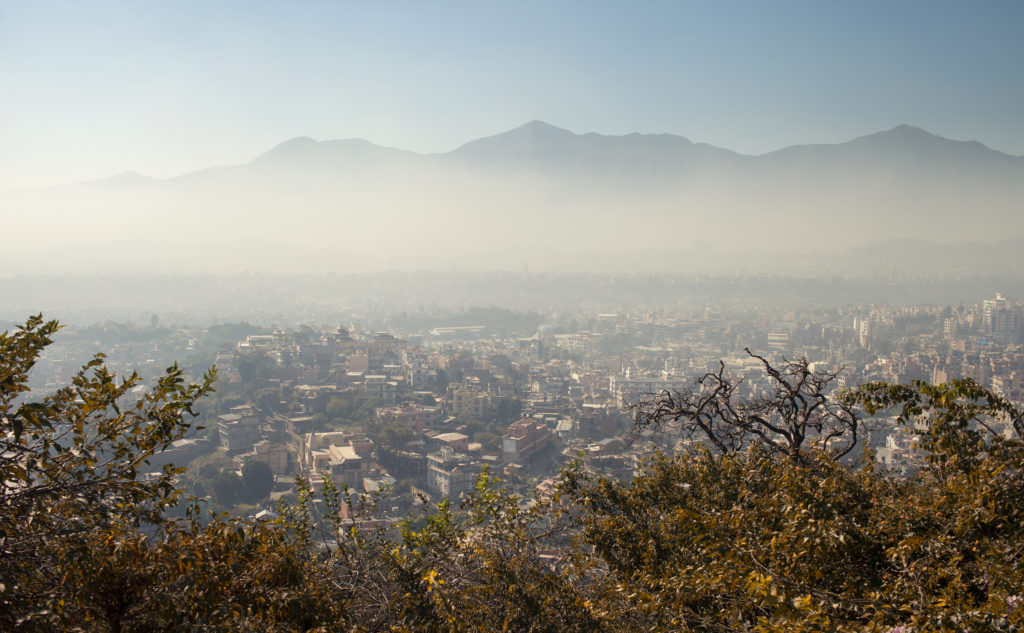The World Health Organization’s Air Quality Guidelines (AQG) serve as a global target for national, regional and city governments to work towards improving their citizen’s health by reducing air pollution.
Why does WHO publish Air Quality Guidelines?
Clean air is a basic human right. Yet, air pollution continues to pose a significant threat to people worldwide – it is the greatest environmental threat to health and a leading cause of non-communicable diseases (NCDs) such as heart attacks or stroke. According to the World Health Organization, there are 7 million premature deaths every year due to the combined effects of outdoor and household air pollution– with millions more people falling ill from breathing polluted air. More than half of these deaths are recorded in developing countries.
WHO regularly integrates scientific evidence on air pollution’s health impacts as well as monitors countries’ air quality progress. The recommendations included in the WHO Air Quality Guidelines are based on systematic literature reviews and subsequent rigorous evaluation methods as well as extensive consultation with experts and end-users of the guidelines from all regions of the world.
Ahead of the publication of the 2021 WHO Air Quality Guidelines, here is a breakdown of what they are and how governments can use them.
What is air pollution?
Fine particulate matter (PM2.5) can penetrate through the lungs and further enter the body through the blood stream, affecting all major organs.
Exposure to PM2.5 can cause diseases both to our cardiovascular and respiratory system, provoking, for example stroke, lung cancer and chronic obstructive pulmonary disease (COPD).
New research has also shown an association between prenatal exposure to high levels of air pollution and developmental delay at age three, as well as psychological and behavioural problems later on, including symptoms of attention deficit hyperactivity
disorder (ADHD), anxiety and depression.
What is the effects of air pollution on human health?
Fine particulate matter (PM2.5) can penetrate through the lungs and further enter the body through the blood stream, affecting all major organs.
Exposure to PM2.5 can cause diseases both to our cardiovascular and respiratory system, provoking, for example stroke, lung cancer and chronic obstructive pulmonary disease (COPD).
New research has also shown an association between prenatal exposure to high levels of air pollution and developmental delay at age three, as well as psychological and behavioural problems later on, including symptoms of attention deficit hyperactivity
disorder (ADHD), anxiety and depression.

Smog over Kathmandu, Nepal
How are the Guidelines developed?
The WHO Air Quality Guidelines are a set of evidence-based recommendations of limit values for specific air pollutants developed to help countries achieve air quality that protects public health. The first release of the guidelines was in 1987. Since then, several updated versions have appeared and the latest global version was published in 2005. WHO updates the Air Quality Guidelines on a regular basis to assure their continued relevance. Further, they aim to support a broad range of policy options for air-quality management in various parts of the world considering the breadth of new health studies that have been published.
The 2021 update of the WHO Air Quality Guidelines responds to the real and continued threat of air pollution to public health.
According to WHO rules and procedures for guidelines development, several expert groups are established, each one with a very specific function. The selection of which pollutants to update is agreed upon by one group, in this case, particulate matter, ozone, nitrogen dioxide and sulfur dioxide. Other teams of experts draft the background material — the literature reviews and its assessment— which is reviewed and commented by the main group of experts.
Based on the background materials and the comments, another expert group agrees on the format and contents of the updated guidelines and recommended changes in the text supporting the guidelines.
What do the Guidelines recommend?
The updated WHO Air Quality Guidelines recommend levels and interim targets for common air pollutants: PM, O3, NO2, and SO2.

How can governments use them?
Governments across the world use the guidelines in different ways depending on their technical capabilities, economic capacity, air quality management policies and other political and social factors. Before adopting the WHO guideline values as legally based standards, governments should consider their unique, local conditions.
What do the guidelines aim to achieve?
Although the guidelines are neither standards nor legally binding criteria, they are designed to offer guidance in reducing the health impacts of air pollution based on expert evaluation of current scientific evidence.
These guidelines incorporate scientific evidence from multiple countries, which makes them relevant to the diverse conditions around the world and capable of supporting a broad range of policy options for air quality management.
They are intended to be used in diverse conditions in all WHO’s regions and to support a broad range of policy options for air quality management. Knowledge about the hazardous properties of the pollutants and indication of the risk related to exposure, provide an essential scientific contribution for air quality management.
Significant health benefits can be achieved by reducing a population’s exposure to air pollution. Addressing air pollution through policy actions in energy, transport, waste management, agriculture and urban planning can also uncover additional co-benefits for health, climate mitigation and sustainable economic development.

Family hiking in Hong Kong mountains.
Additional resources:
Air quality guidelines global update 2005
WHO Factsheet: Ambient (outdoor) air pollution
WHO Factsheet: Household air pollution and health